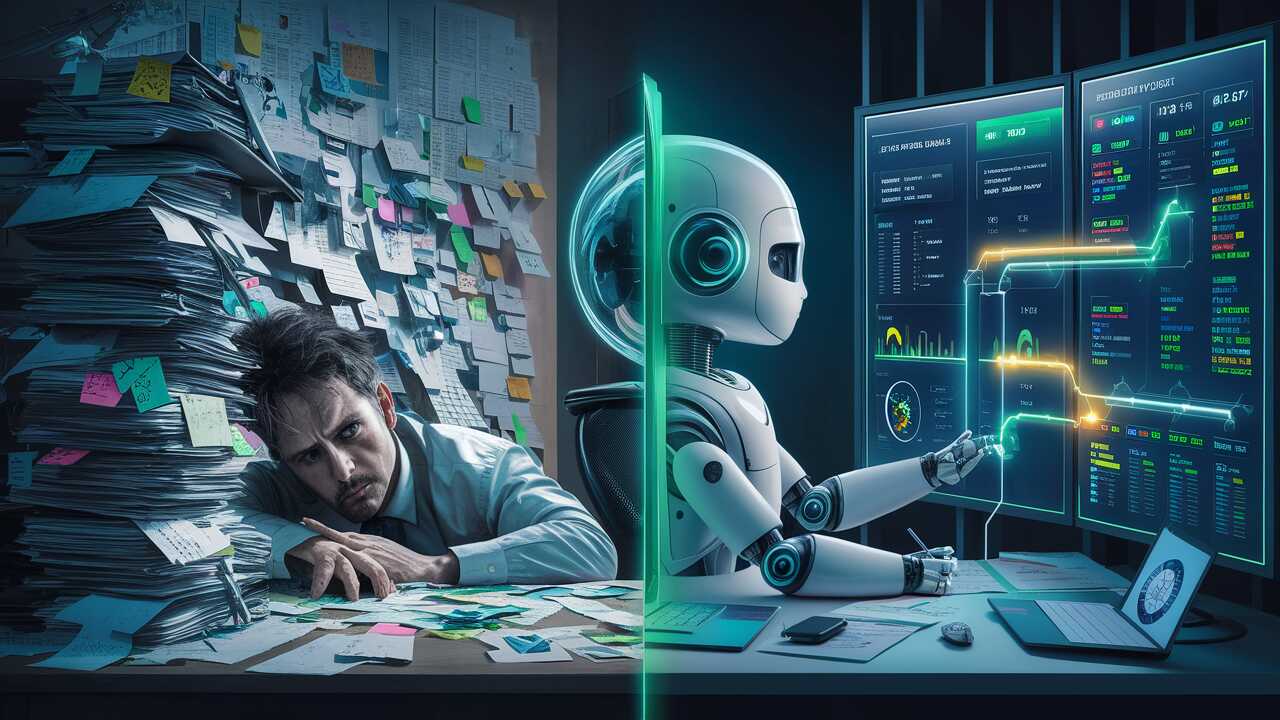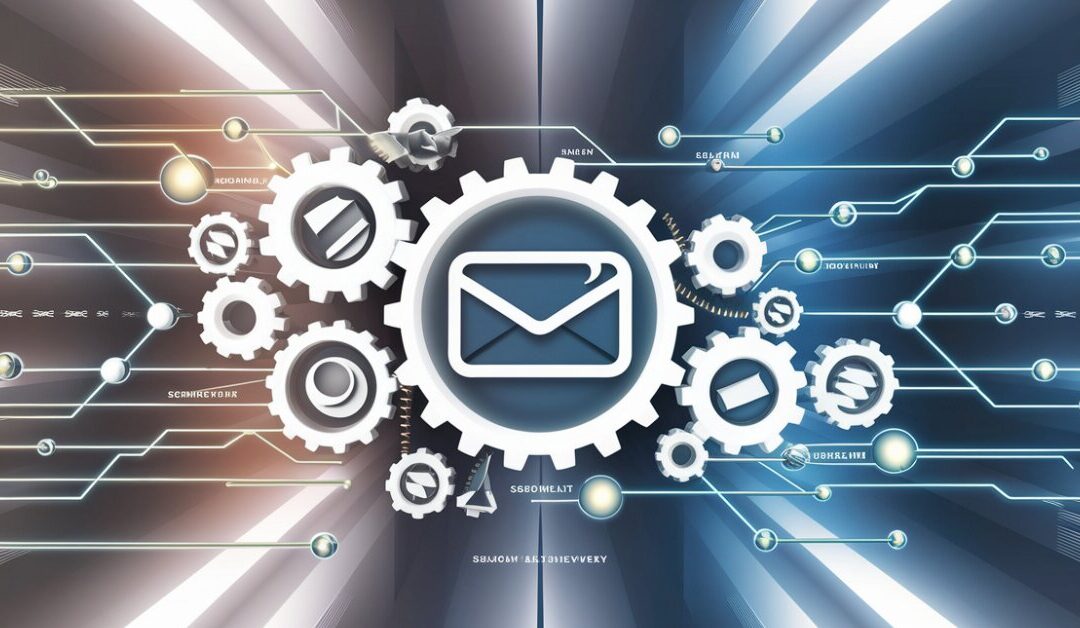Nurturing leads is one of the most important aspects of any successful marketing strategy. It helps in building relationships with potential customers and guiding them through the buyer’s journey until they’re ready to purchase. Manually keeping up with every lead is too stressful and a time-consuming task, this is where email automation steps in to save the day. By automating your email marketing, you can send the right message at the right time without lifting a finger.
Not only does this improve the efficiency of your lead nurturing process, but it also creates a more personalized experience for your audience, helping you build trust and stay top-of-mind.
In this post, we’ll look into the key benefits of email automation for lead nurturing and show you how it can drastically improve your engagement and conversion rates.
Table of Contents
What is Email Automation for Lead Nurturing?
Email automation is a game-changing tool that allows marketers to send emails to their subscribers automatically based on triggers or predefined schedules. Email automation helps businesses streamline lead nurturing efforts by creating personalized, timely, and consistent communications with prospects without manual efforts.
Lead nurturing, on the other hand, refers to developing relationships with potential customers at every stage of the sales funnel. It’s all about keeping the conversation going, whether someone has just discovered your business or is close to making a purchase, nurturing ensures that they don’t slip through the cracks.
How Does Automation Fit into Lead Nurturing?
When you combine email automation with lead nurturing, you create a powerful system where your marketing continues working even when you’re not.
Instead of sending emails manually to every lead, you can set up automated workflows that send tailored messages based on a lead’s behaviour. For example, if a potential customer downloads a free guide from your site, email automation can trigger a follow-up email series that gradually nudges them closer to purchasing your product.
By automating your lead nurturing process, you can:
- Keep your brand in the customer’s mind through consistent communication.
- Deliver personalized content based on each lead’s interaction with your brand.
- Ensure no lead goes cold because of delayed or inconsistent outreach.
Manual vs. Automated Lead Nurturing
Before automation, marketers would send emails manually, often leading to missed opportunities, inconsistency, and less personalization. Manual nurturing might involve going through your list every week or month and sending generic emails that may not align with where a lead is in their journey.

With email automation, you create predefined email sequences that can be triggered by specific actions or time intervals. It’s a digital assistant who knows exactly when to send the right message to your leads. This not only saves time but also boosts engagement and conversions by ensuring your content is relevant to the lead’s needs.
For example:
- If a lead signs up for your newsletter, an automated workflow could send them a welcome email immediately, followed by a series of value-packed emails over the next few weeks.
- If someone abandons their shopping cart, automation can send reminders or special offers to bring them back to complete their purchase.
Leveraging email automation for lead nurturing in your business can help you build meaningful relationships at scale, and help you to turn prospects into loyal customers with minimal manual effort.
Why Lead Nurturing Matters in the Buyer’s Journey
Potential customers rarely make purchasing decisions in an instant, instead, they go through a process known as the buyer’s journey, which consists of three main stages: awareness, consideration, and decision.

Lead nurturing plays a key role in this journey, guiding prospects from the initial stage of discovering your brand to the point where they’re ready to buy.
Below are the reasons lead nurturing is essential for each stage of the buyer’s journey:
- Awareness Stage: Building Initial Trust
In the awareness stage, the prospect realizes they have a problem or need but may not yet know the solution—or even your product. At this point, your goal is to position your business or product as a helpful resource without pushing a hard sell. This is where lead nurturing comes into play.
By offering valuable, educational content (like blog posts, ebooks, or videos) through automated email campaigns, you can introduce your brand and build trust early on.
Instead of bombarding a new lead with promotional messages, nurturing allows you to focus on solving their pain points. Over time, this consistent interaction makes your business more credible and reliable to your prospect.
If someone downloads a free guide from your website, an automated email series could provide further insights, leading them to see your brand as a thought leader in your industry.
- Consideration Stage: Providing Tailored Solutions
As the lead progresses into the consideration stage, they begin actively looking for solutions to their problem. At this point, lead nurturing becomes even more crucial. The key here is providing content that positions your product or service as the ideal solution to their need.
Through email automation, you can deliver more personalized content that speaks directly to their pain points. Segmentation, which groups lead based on their behaviour or interests, ensures that your emails are relevant and timely.
For example, if a lead has shown interest in a specific product or service on your website, you can send them case studies, product comparisons, or testimonials via automated emails to help them evaluate their options.
Without lead nurturing, you run the risk of losing the prospect to competitors who offer more value during this critical decision-making process.
- Decision Stage: Closing the Deal
In the decision stage, the lead is ready to buy from you but might need a final nudge, this is where lead nurturing can make all the difference between a conversion and a lost opportunity.
At this stage, automated emails can include targeted offers, such as discounts, free trials, or limited-time promotions, to encourage immediate action. A well-timed email can push the lead over the edge, leading to a successful conversion. Additionally, nurturing in this stage helps reinforce your value proposition, addressing any last-minute concerns the lead may have.
For example, if a lead has abandoned their cart, sending an automated reminder email with a special discount can prompt them to complete the purchase. Without automation, these opportunities might slip through the cracks, resulting in lost revenue.
By nurturing leads throughout the buyer’s journey, you can build relationships, create trust, and keep your brand top-of-mind, ultimately guiding more prospects towards a purchase. Email automation makes this process scalable, ensuring that no lead is left behind, no matter where they are in their journey.
Benefits of Using Email Automation for Lead Nurturing
Email automation for lead nurturing offers several key benefits that can transform how you engage with prospects and guide them through the buyer’s journey.
Email automation helps simplify the nurturing process, improve personalization, and increase your chances of turning leads into paying customers.
Here are the top benefits of using email automation for lead nurturing:
- Saves Time and Resources
One of the biggest advantages of using email automation for lead nurturing is that it saves time and resources. Sending out dozens, if not hundreds, of personalized emails manually consumes time and is inefficient. With automation, you can set up workflows once, and the system will handle the rest.
When a new lead signs up for your newsletter or downloads a guide from your website, an automated sequence can trigger a series of emails, providing useful content and nudging them toward conversion—all without you lifting a finger.
This method will help your team focus on other marketing aspects while email automation continuously works in the background.
- Provides Consistent Communication
Leads can quickly forget about your brand if you don’t consistently engage with them. Email automation ensures that your communication is always timely and consistent.
With the help of email automation, if a lead expresses show interest in a particular product on your website, you can send a follow-up email with more information or recommendations such as a cart abandonment reminder to keep your leads engaged without delay and minimize the risk of losing them to competitors.
- Increases Personalization at Scale
Email automation allows you to send personalized messages to a large audience without manual intervention. With email automation, you can easily scale personalization efforts by segmenting your leads based on their behaviour, preferences, or stage in the buyer’s journey.
Automation allows you to send targeted messages that feel personalized to the recipient, even though they’re part of a larger, automated campaign.
For example, if a lead has shown interest in a specific service, you can trigger an automated email with content tailored to that interest, making the communication feel highly relevant to their needs. This level of personalization fosters stronger relationships and increases engagement.
- Boosts Lead Engagement
With email automation, you can engage leads at the right time with the right message, which increases the chance of interaction. Automated emails triggered by specific actions—such as signing up for a webinar, downloading a resource, or browsing a particular page can encourage further engagement by providing timely and relevant information.
For instance, if a prospect downloads an ebook about improving website SEO, you can automatically send a follow-up email offering more resources or inviting them to a related webinar.
By providing value at critical moments, you can keep your leads engaged and guide them toward deciding to buy from you.
- Improves Lead Scoring and Qualification
Email automation also plays a key role in lead scoring, which helps prioritize leads based on their chance to convert. With email automation, you can track how leads interact with your automated emails, whether they open them, click on links, or take specific actions and assign them scores that indicate their readiness to buy.

This process of lead scoring allows your sales team to focus on high-quality leads, improving the efficiency of the sales funnel. Automation can even trigger notifications to your sales team when a lead reaches a certain score which signals time for more direct outreach.
- Reduces Human Error
When nurturing leads manually, it’s easy to make mistakes like sending the wrong email to the wrong list or forgetting to follow up with a potential customer.
With email automation, human error is drastically reduced. You set up workflows once, and the system takes care of sending the correct emails to the right leads based on their behaviours and actions.
For example, if a lead has just completed a product demo on your website, an automated workflow can send them a case study or pricing information automatically, without the risk of forgetting or sending duplicate emails. This reliability improves the overall customer experience.
- Increases Conversion Rates
The ultimate goal of lead nurturing is to turn prospects into customers, and email automation makes that goal more attainable by delivering the right content at the right time.
Automated emails nurture your leads throughout their buyer’s journey, keeping them informed, engaged, and more likely to convert.
With automation, you instruct your automated workflows to send special promotions, exclusive offers, or reminders just as a lead is close to making a purchase. These well-timed nudges can significantly increase conversion rates by encouraging leads to take action when they’re most likely to do so.
- Provides Valuable Insights and Analytics
Another major benefit of email automation is the ability to track and analyze performance. Most automation platforms such as MailerLite, Sender, Moosend, Mautic and Omnisend offer built-in analytics that allow you to monitor open, click-through, bounce and conversions rates, and more.
These insights provide a deeper understanding of what’s working and what needs improvement in your lead nurturing strategy.
For example, if you notice that leads are dropping off after a particular email in your automated sequence, you can tweak the messaging or add an extra incentive to improve engagement. With data-driven insights, you can continuously optimize your email automation efforts for better results.
Common Mistakes to Avoid when Using Email Automation for Lead Nurturing
Email automation can be a game-changer for lead nurturing if it’s done right. But, as with any tool, misuse can backfire and drive leads away. Avoiding these common mistakes will help you make the most of email automation, and ensure that your messages resonate, engage, and guide leads to conversion.
- Over-Automation
While automation can help simplify your emails, over-automation can make your communication feel robotic and impersonal. If leads receive generic, repetitive emails that lack a human touch, they’re more likely to disengage or unsubscribe.
Balance automation with personalization, and use data from previous interactions to send relevant messages to each lead based on their interests, needs, and position in the buyer’s journey.
Automation is just a tool—it’s up to you to use it to build relationships, not just send emails.
- Neglecting Segmentation
One-size-fits-all emails can make your content feel irrelevant to the recipient. Sending the same email to everyone, regardless of where they are in their journey or what they’re interested in, is a quick way to lose engagement.

Use segmentation to group leads based on their purchase history, browsing behaviour, or demographic data. You can use segmentation by engagement level to send exclusive offers to highly engaged leads while sending educational content to those in the awareness stage.
- Failing to Set Clear Goals for Each Campaign
Without clear goals, your email automation strategy is more of a shot in the dark. Each of your campaigns should have a specific objective, such as moving leads from one stage of the buyer’s journey to the next or nurturing leads with educational content until they’re ready to buy.
Define a purpose for every automated sequence. Are you introducing new leads to your brand? Trying to re-engage cold leads? Or are you pushing a warm lead toward a purchase decision? Clear goals keep your messages focused and increase your chances of success.
- Ignoring Data and Analytics
Many businesses set up automated email sequences and forget about them with the hope they will work fine. Regularly review metrics like open, click-through, and conversion rates and use the available data to refine your email automation efforts.
If a particular email has a low open rate, you can tweak the subject line or test different send times.
- Overloading Leads with Too Many Emails
Too many emails can overwhelm your leads, causing them to tune out or, worse, unsubscribe. Set a reasonable email frequency and stick to it. Focus on sending valuable, high-quality content rather than bombarding your subscribers with too many messages.
- Neglecting Mobile Optimization
With most people checking emails on their smartphones, neglecting mobile optimization is a huge oversight. If your emails aren’t optimized for mobile, you risk losing engagement from leads who find your messages difficult to read or interact with on smaller screens.
Design all your automated emails to be responsive and test them across multiple devices to ensure that your content looks great, loads quickly, and is easy to navigate, no matter the screen size. This way, you’ll provide a seamless experience for every reader, whether on a desktop, tablet, or phone.
- No Calls-to-Action (CTAs)
A well-designed automated email without a clear call-to-action (CTA) is like an invitation without directions. Weak or missing CTAs leave your leads unsure of what to do next and will reduce the effectiveness of your emails.
Make sure every email includes a clear, compelling CTA that encourages the lead to take a specific action, whether it’s downloading a resource, booking a demo, or making a purchase.
Use action-oriented language that guides the lead to the next step in their journey.
- Relying Solely on Automation
While email automation is a powerful tool, it’s not a replacement for genuine human interaction. Relying too heavily on automation can create a disconnect between your business and your leads, especially for high-ticket products or services that require a more personal touch.
Final Thoughts
Email automation is a powerful tool for lead nurturing, it enables you to connect with leads in a meaningful, timely way without the manual workload. If you focus on segmentation, personalization, and timing, you can use automation to engage your leads with the right content at every stage of their journey—from initial interest to purchase.
As you automate your email campaigns, avoid common pitfalls like over-automation, neglecting analytics, and using generic messages. Instead, craft your approach with thoughtful touchpoints and clear calls-to-action that guide leads naturally toward conversion.
When done right, email automation will not only boost your engagement but also build trust, keep your business in their mind, and ultimately drive conversions.
Ready to see the impact of strategic email automation on your lead nurturing? You can start with these tips, and watch your email campaigns go from good to great. But remember, the more you fine-tune and adapt to your audience’s needs, the stronger your results will be.





0 Comments